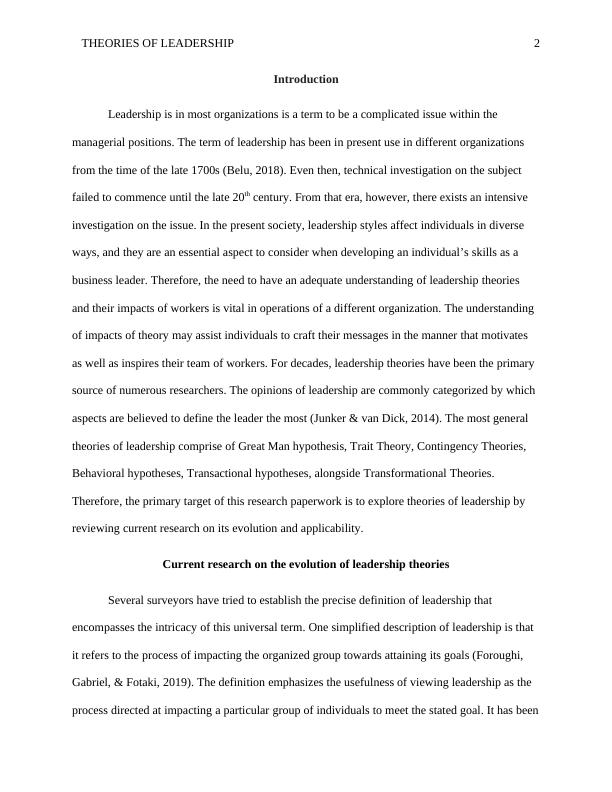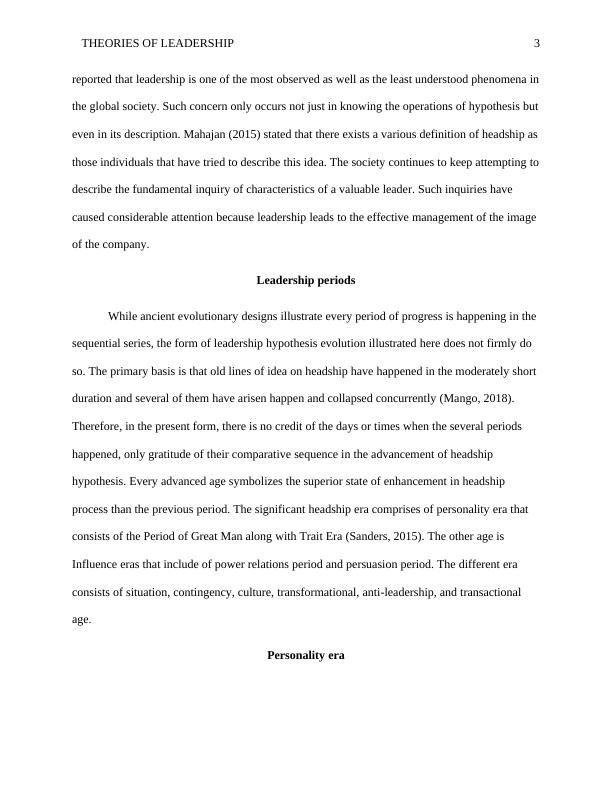Theories of Leadership
10 Pages2760 Words45 Views
Added on 2023-01-19
About This Document
This research paper explores the theories of leadership by reviewing current research on its evolution and applicability. It discusses the different theories of leadership, including the Great Man hypothesis, Trait Theory, Contingency Theories, Behavioral hypotheses, Transactional hypotheses, and Transformational Theories. The paper also examines the applicability of these theories in organizations and the importance of understanding leadership styles and their impact on workers.
Theories of Leadership
Added on 2023-01-19
ShareRelated Documents
End of preview
Want to access all the pages? Upload your documents or become a member.
Evolution of Leadership Theories
|11
|3058
|60
Evaluation of the Impact of Leadership in Science
|21
|6227
|25
Does Moral Leadership Enhance Employee Creativity? Employee Identification with Leader and Leader–Member Exchange (LMX) in the Chinese Context
|5
|853
|499
Theories of Leadership
|13
|2818
|81
improve people make better decisions PDF
|4
|1332
|30
Effects of Violent Video Games on Aggression | Desklib
|13
|3881
|145



